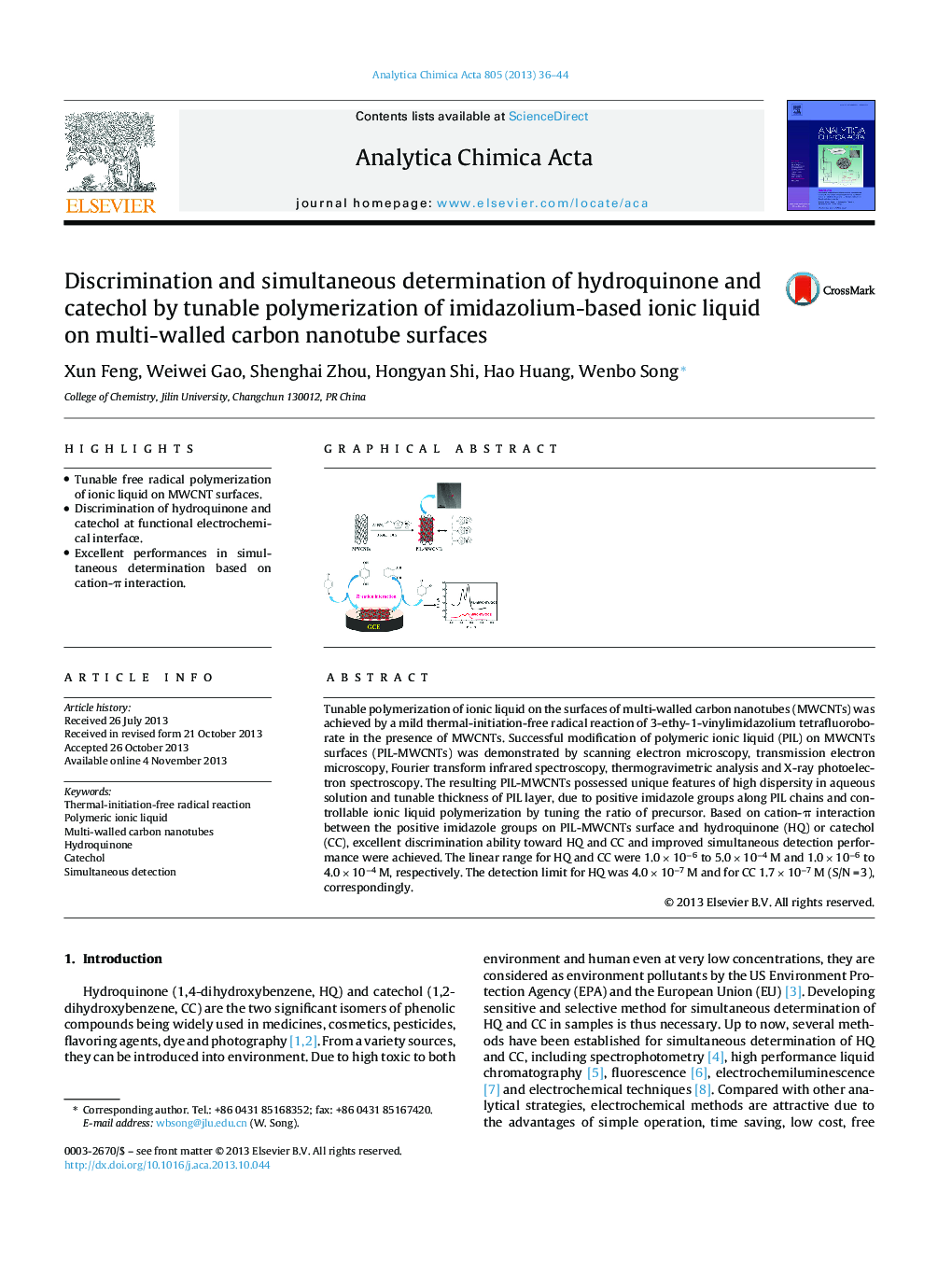| Article ID | Journal | Published Year | Pages | File Type |
|---|---|---|---|---|
| 1165060 | Analytica Chimica Acta | 2013 | 9 Pages |
•Tunable free radical polymerization of ionic liquid on MWCNT surfaces.•Discrimination of hydroquinone and catechol at functional electrochemical interface.•Excellent performances in simultaneous determination based on cation-π interaction.
Tunable polymerization of ionic liquid on the surfaces of multi-walled carbon nanotubes (MWCNTs) was achieved by a mild thermal-initiation-free radical reaction of 3-ethy-1-vinylimidazolium tetrafluoroborate in the presence of MWCNTs. Successful modification of polymeric ionic liquid (PIL) on MWCNTs surfaces (PIL-MWCNTs) was demonstrated by scanning electron microscopy, transmission electron microscopy, Fourier transform infrared spectroscopy, thermogravimetric analysis and X-ray photoelectron spectroscopy. The resulting PIL-MWCNTs possessed unique features of high dispersity in aqueous solution and tunable thickness of PIL layer, due to positive imidazole groups along PIL chains and controllable ionic liquid polymerization by tuning the ratio of precursor. Based on cation-π interaction between the positive imidazole groups on PIL-MWCNTs surface and hydroquinone (HQ) or catechol (CC), excellent discrimination ability toward HQ and CC and improved simultaneous detection performance were achieved. The linear range for HQ and CC were 1.0 × 10−6 to 5.0 × 10−4 M and 1.0 × 10−6 to 4.0 × 10−4 M, respectively. The detection limit for HQ was 4.0 × 10−7 M and for CC 1.7 × 10−7 M (S/N = 3), correspondingly.
Graphical abstractFigure optionsDownload full-size imageDownload as PowerPoint slide
